MADE @ MIZZOU: TAM DESIGNS
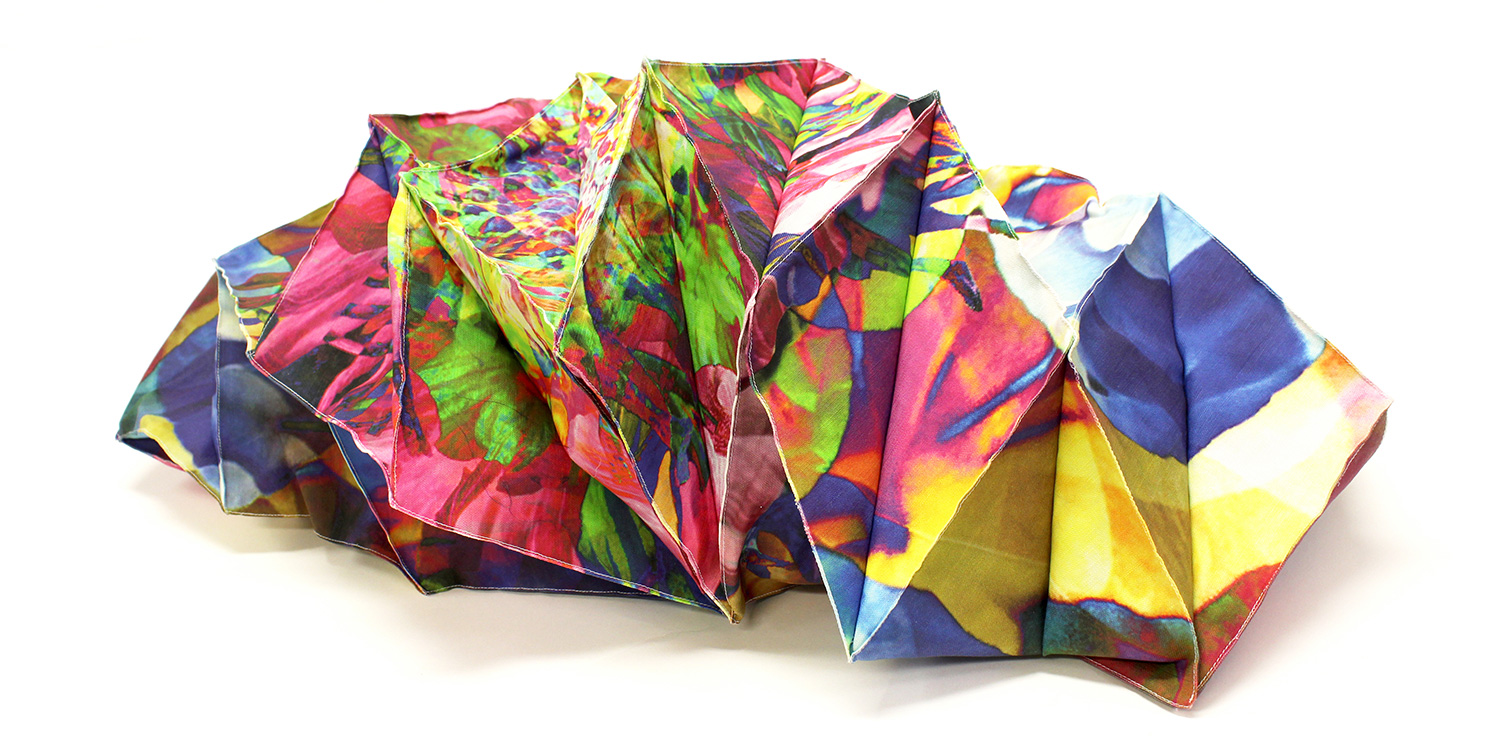
This is a growing collection of one-of-a-kind apparel designs by students and faculty in the Department of Textile and Apparel Management, acquired as a means of documenting technology, artistic trends, research, and collaborations within the department and related industries.
“Organized Chaos” Digitally Printed Origami Sculptural Shrug (2017) By Allison Vaughn, BS HES ’17
This piece was inspired by origami springs. The duality of the spring’s expansion and contraction reflect chaos found within order. When compacted and hung on the wall, it illustrates order. When expanded and worn, it reveals a brightly colored surface design representing chaos. This design was created as part of the Art (Wear) Off the Wall project for TAM’s Creativity and Problem Solving class. It was also modeled during the MHCTC’s 50th anniversary Friend’s fundraising reception That’s a Wrap in 2017.Pictured above: “Organized Chaos” as decorative art.

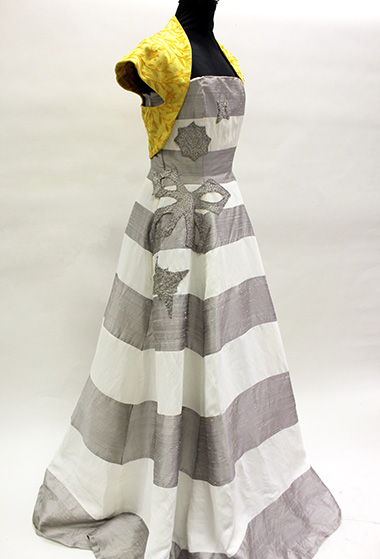
“Iolani” Grey and White Evening Dress with Yellow Jacket (2012) By Kate Brooks, BS HES ’12
Sponsored by faculty member Dr. Jean Parsons, Kate Brooks created this design for the 2012 Balenciaga Competition at the International Textile and Apparel Association. Iolani was inspired by the Hawaiian Royal Palace, specifically the decorative striped columns that adorn the building. The dress is comprised of a princess seam bodice and a six-gored skirt broken into striped sections of varying width. The sections are pieced together to form a slight chevron, giving the skirt a hexagonal structure. The hand-beaded appliques are artistic representations of the insignia worn by members of the royal family. The jacket references the boleros made famous by Cristobal Balenciaga.
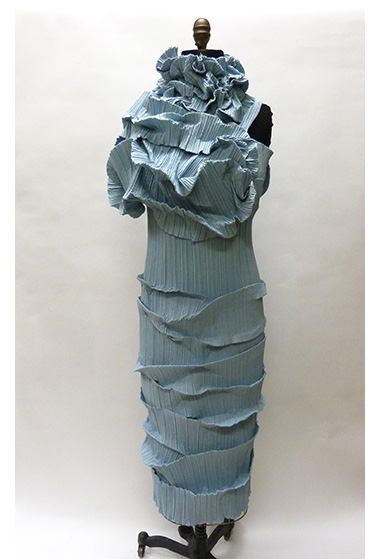
“Rippling” Pleated Polyester Dress (2020) By Jenny Wu, BS HES ’20
My design is called Rippling and is inspired by one of the arts of nature: the shapes and grills of oyster mushrooms. I used a textured fabric as the reflection of the appearance of oyster mushrooms and a 3D element. The color of this fabric is a hazy blue which looks like the color of water because the twisting shape and the layered bottom reminds me of the effect of ripples and waves. Jenny’s process paper.
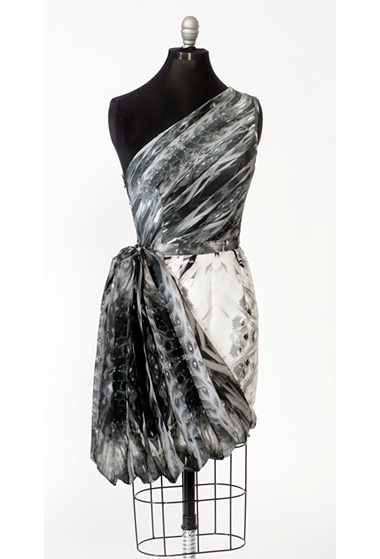
“Pleats Perspective” Digitally-Printed Dress (2014) By Amanda Smith, BS HES ’16
Pleats can be used to shape textiles and apparel in a multitude of ways, transforming flat fabrics into three-dimensional forms. The purpose of this research was to explore the importance of pleats in fashion, to identify the methods, uses, history, and design possibilities of pleats, and then to create designs based on pleated inspirations [which included the MHCTC’s Mariano Fortuny’s pleated Delphos dress and Issey Miyake’s hooded gown.] My design began with an understanding of pleat forms with a goal to incorporate digital textile printing to heighten the appearance and depth of the pleated surface.“ Amanda’s garment was sponsored by TAM faculty member Dr. Jean Parsons for submission to the 2015 design competition of the International Textile and Apparel Association, and was also modeled during the MHCTC’s 50th anniversary Friend’s fundraising reception That’s a Wrap in 2017.
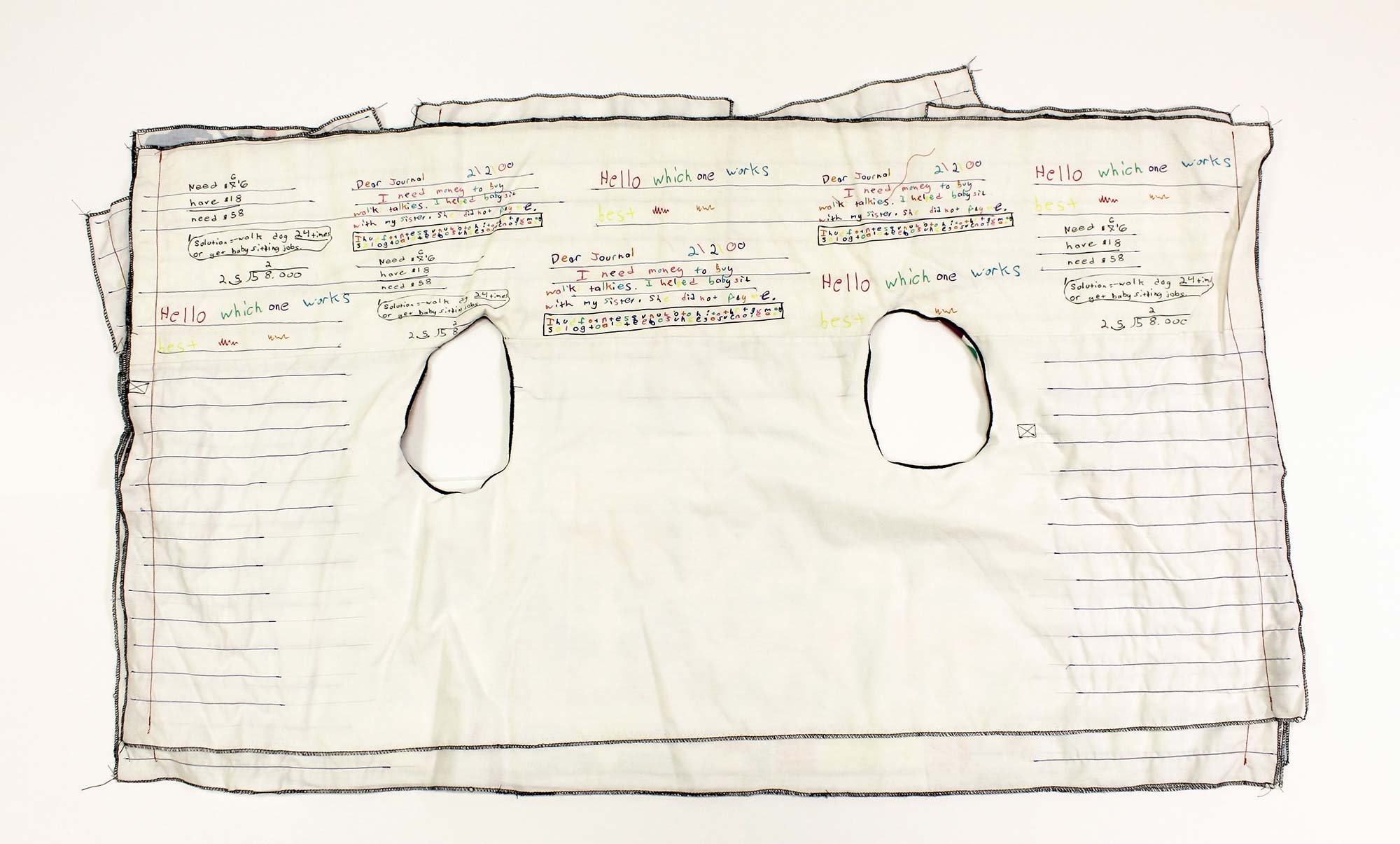
“Bricolage” Cotton Vest (2011) By Ellie Schamel, BS HES ’12
The Bricolage creative design project was presented in TAM 4480 Creative Problem Solving as an opportunity to use objects on hand, objects donated and objects found. It was also inspired by the Columbia One Look Program: Ediciones Vigíia’s Art of the Book and Our Creative Response. Ellie focused on three themes for her design: 1) the use of language on clothing, 2) how dress interacts with the body as it is put on and removed, and 3) using texture, image, surface and 2D to 3D surface design. The digitally-printed and hand-painted interior “pages” highlight “hand-written” text from Ellie’s childhood journal intended to resemble the handmade quality of the Cuban bricolage books. View the gallery guide from MU’s Museum of Art and Archaeology 2012 exhibition The Art and History of Cuba’s Ediciones Vigía (pdf).
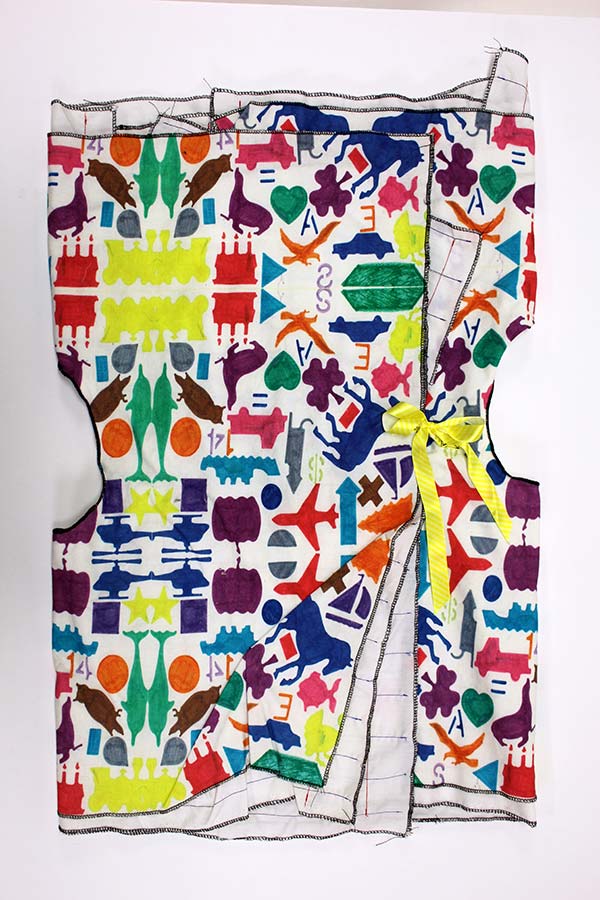
“Bricolage” Cotton Vest as Folded Book (2012) By Ellie Schamel, BS HES ’12
When flat, the rectangular object replicates the simplicity of a book shape, while the black yarn recalls the repetitive use of borders on the pages of the Cuban books. A yellow ribbon acts as a creative yet functional closure, relating the process of dawning the garment to opening and closing a book.
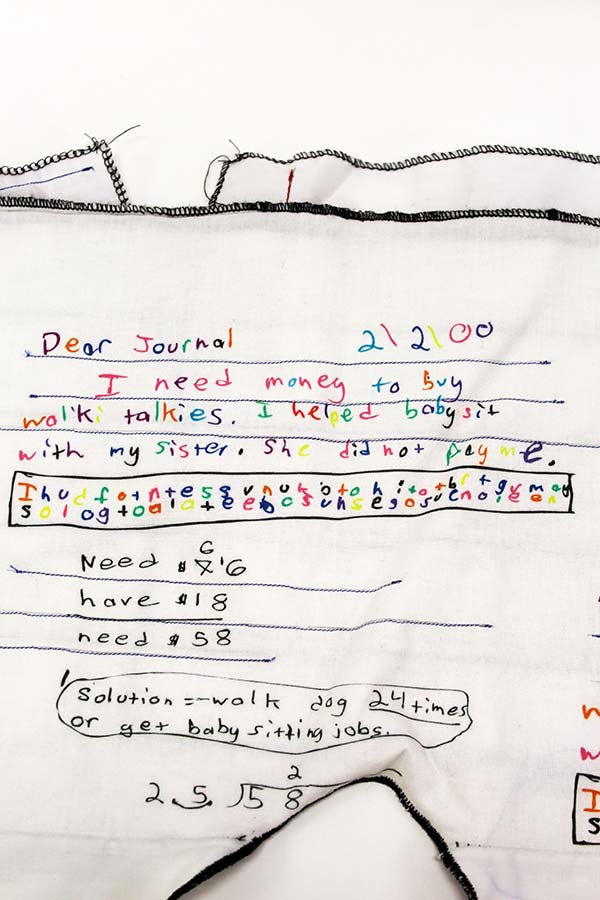
“Bricolage’ Cotton Vest/Book Interior Text Detail (2012) By Ellie Schamel, BS HES ’12
“Dear Journal, I need money to buy walkie talkies. I helped babysit with my sister. She did not pay me. Need: $76; have $18; Solution = walk dog 24 times or get babysitting jobs.”
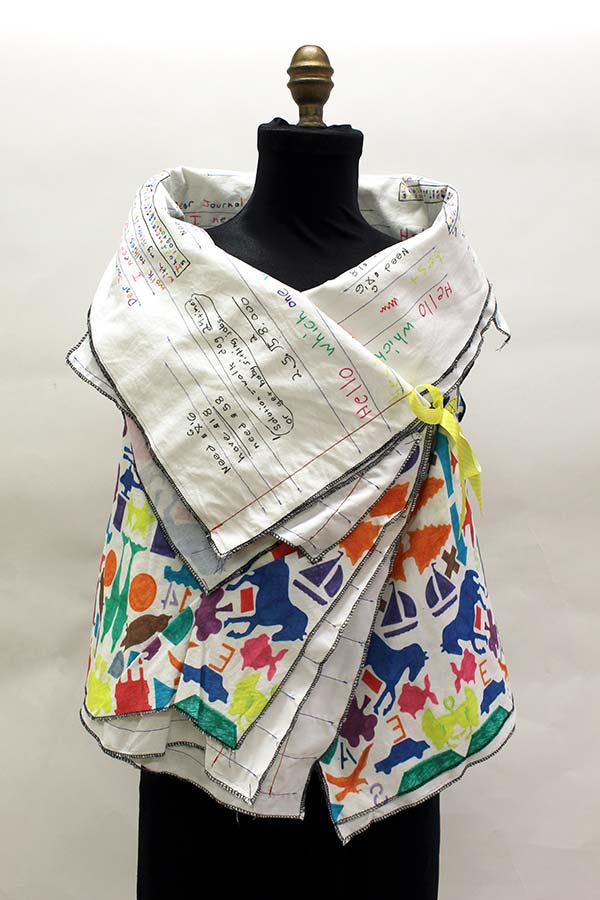
“Bricolage” as Garment (2012) By Ellie Schamel, BS HES ’12
The interior “pages” of the garment are highlighted while worn on the body: the collar can be maximized to show more of the interior words while the hem flares at the hips, accentuating the tucked and folded interior.
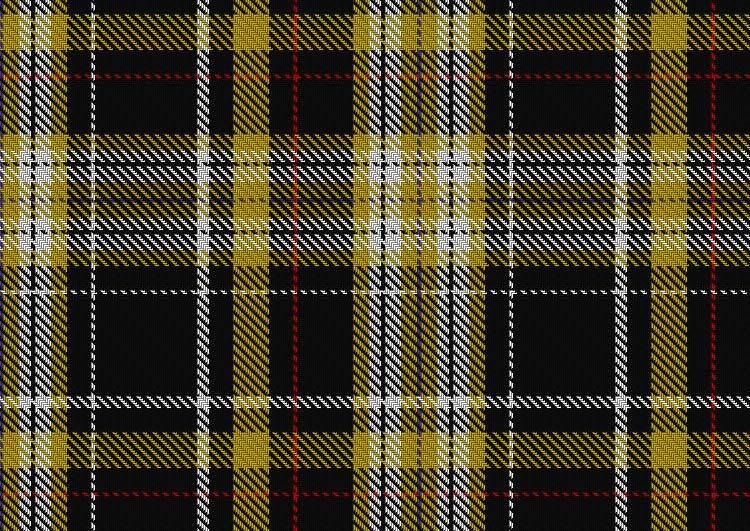
Mizzou Plaid (2007)
The Mizzou Plaid was designed by TAM student Lauren Drufke-Mahe, BS HES ‘06, as part of a design competition in TAM’s computer-aided design class. Twelve students created plaids inspired by their study of Mizzou’s history. Nearly 6,500 people then voted in an online poll for their favorite plaid. The gold lines woven into the winning design, according to Drufke-Mahe, “represent strength and endurance of the past, present and future.” A woven sample of the tartan was received by the Scottish Register of Tartans in 2009 for permanent preservation in the National Records of Scotland.